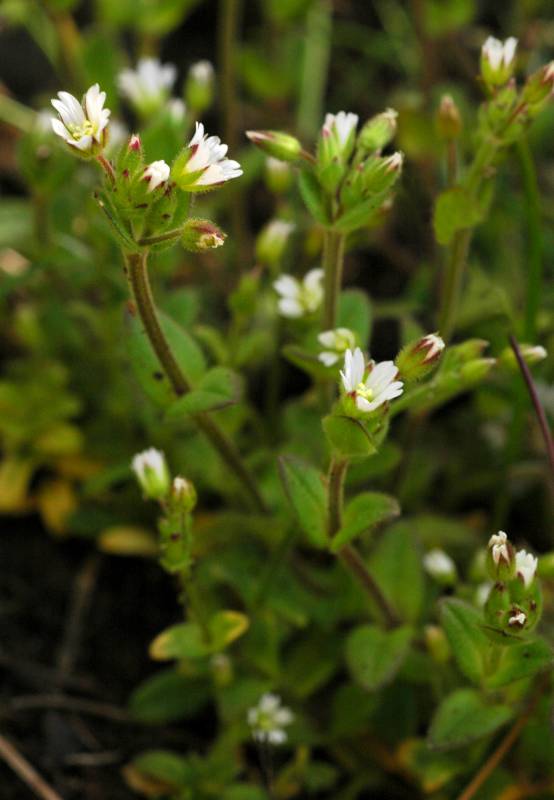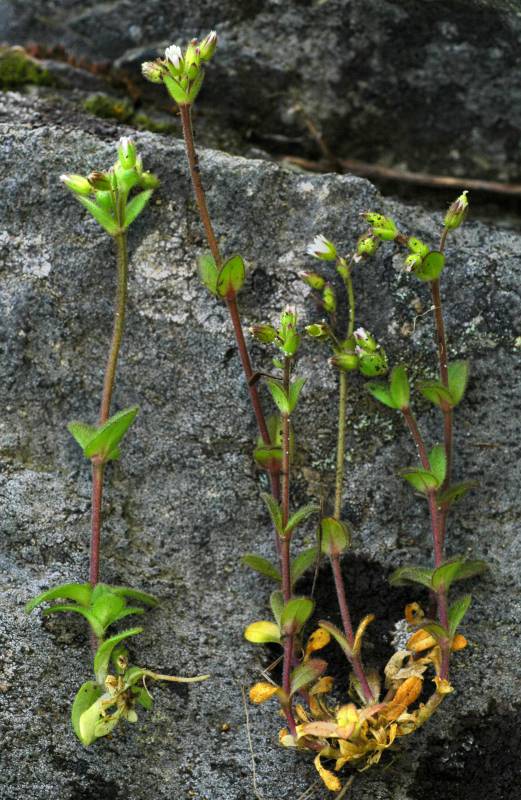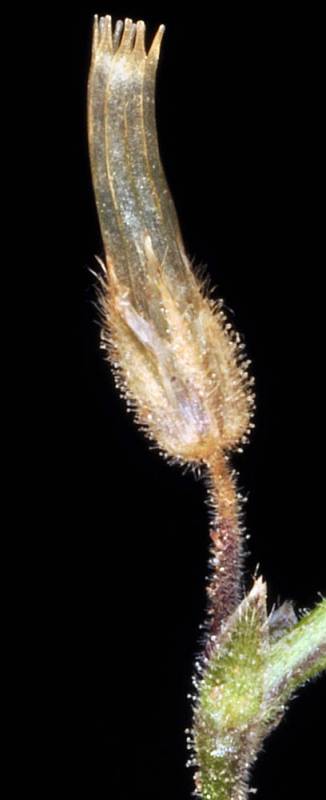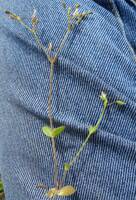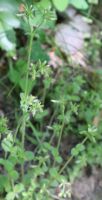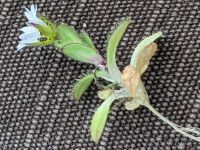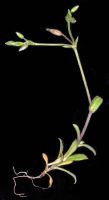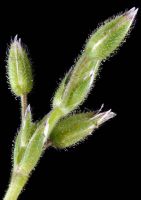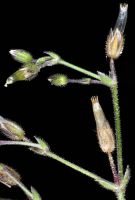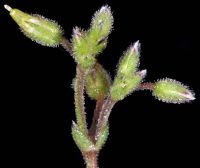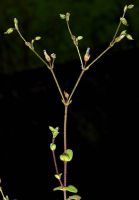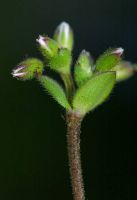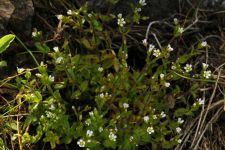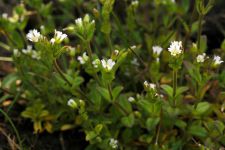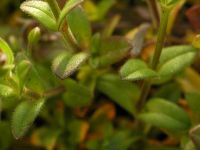Distribution: Occurring chiefly west of the Cascades crest in Washington; British Columbia to Oregon, and from the Great Plains east to the Atlantic Coast.
Habitat: Dry, sandy or gravelly balds, fields, prairies, roadsides, and other disturbed open areas.
Flowers: April-June
Origin: Introduced from Europe
Growth Duration: Annual
Conservation Status: Not of concern
Pollination: Bees, flies
Annuals with taproots, the stems erect or ascending, branched near the base, 2-12 cm. tall, covered with glandular and non-glandular hairs.
Leaves opposite, sessile, 5-15 mm. long and 3-6 mm. wide, hairy; basal leaves oblanceolate to spatulate, the tip obtuse; cauline leaves lanceolate, elliptic, or ovate, acute to obtuse.
Inflorescences of lax, 3- to 15-flowered, bracteate cymes; pedicles erect, curved, 3-8 mm. long, glandular-pubescent; sepals 5, green, sometimes red-tipped, oblong-lanceolate, 4-5 mm. long; petals white or purple-tinged, oblanceolate, bilobed, equal to the sepals; stamens 5; styles 5.
Capsules narrowly cylindric, slightly curved, 6-9 mm. long.
Publication: Fl. Londin. 2(6,69): plate 30. 1794.
Cerastium pumilum Curtis ssp. glutinosum (Fr.) Jalas
PNW Herbaria: Specimen records of Cerastium pumilum in the Consortium of Pacific Northwest Herbaria database
WA Flora Checklist: Cerastium pumilum checklist entry
OregonFlora: Cerastium pumilum information
E-Flora BC: Cerastium pumilum atlas page
CalPhotos: Cerastium pumilum photos

